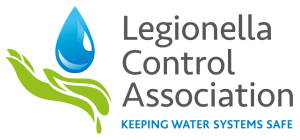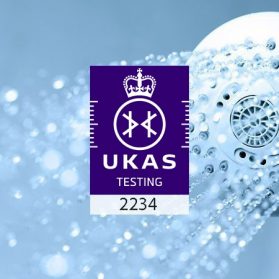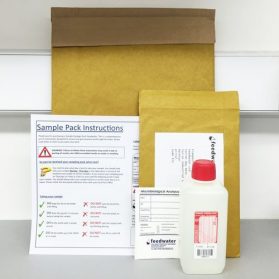When should you test water for Legionella?
This is a question we are frequently asked. Fortunately, the information is readily available to everyone as the HSE has published guidance on this contained within HSG274 Part 2 (page 40 or para 2.119 onwards). However perhaps because it is long or confusing people have not added the guidance book to their reading list. Landlords especially may be unaware of their responsibilities in this area (see bottom). Similarly, small businesses where no concrete Legionella management system is in place may also be unaware of their responsibilities. Hopefully in this post we can break down the guidance for you in an easily digestible manner so that you can be clear on what the guidance says and what you should be doing in your situation. Be aware that sometimes there is no requirement or need to sample. But in some cases sampling is required, especially in care homes and health care premises.
Just a note about us: Feedwater are founder members of the Legionella Control Association. We consult on guidance and UK standards and have an in-house UKAS accredited Legionella testing laboratory. We can provide water hygiene services, control equipment and Legionella risk assessments.
Parts of the following post are taken directly from the HSG274 pt2 guidance and will be highlighted in blue.
Purchase Legionella Analysis Online
Monitoring for legionella
2.120 Legionella monitoring should be carried out where there is doubt about the efficacy of the control regime or it is known that recommended temperatures, disinfectant concentrations or other precautions are not being consistently achieved throughout the system. The risk assessment should also consider where it might also be appropriate to monitor in some high risk situations, such as certain healthcare premises.
It is recommended to test for legionella when:
- A water system is being treated with biocides and water is stored or distributed at lower temperatures.
Initially testing should be carried out monthly to provide an early warning should there be of loss of control.
The frequency of testing should be reviewed and continued until such a time as there is confidence in the effectiveness of the regime. - The limits of a control regime, eg temperature or disinfectant concentrations, are not being consistently achieved.
In addition to a thorough review of the system and treatment regimes, frequent testing, eg weekly, should be carried out to provide early warning of loss of control.
Once the system is brought back under control as demonstrated by monitoring, the frequency of testing should be reviewed. - There is a high-risk area or where there is a population with increased susceptibility, eg in healthcare premises including care homes.
- A water system is suspected or identified in a case or outbreak of legionellosis.
The complexity of the system will need to be taken into account to determine the appropriate number of samples to take. To ensure the sample is representative of the water flowing around the system and not just of the area downstream of the fitting, samples should be taken from separate hot and cold outlets rather than through mixer taps or outlets downstream of TMVs (Thermostatic Mixing Valves) or showers. Samples should be clearly labelled with their source location and if collected pre- or post-flushing.
Flushing: This is where the outlet is run for at least two minutes before taking a ‘post sample’ a ‘pre sample’ is what is taken immediately from the outlet without running it first.
2.122 In both hot and cold water systems, samples should be taken:
- If considered necessary by the risk assessment.
- From areas where the target control parameters are not met (ie where disinfectant levels are low or where temperatures are below 50 °C (55 °C in healthcare premises) for HWS (hot water systems) or exceed 20 °C for cold water systems).
- From areas subject to low usage, stagnation, excess storage capacity, dead legs, excessive heat loss, crossflow from the water system or other anomaly.
Recommended temperatures: Legionella is known to thrive in warm water above 20 °C and below 50 °C as such the guidance recommends keeping outlet temperatures for cold below 20 °C and hot above 50 °C.
Dead legs: These are sections of pipework which lead to nowhere, eg. from outlets which have been removed but the pipe work to them still exists. Areas of buildings where water is not used frequently should also be considered as dead legs. Dead legs provide areas for water to stagnate and microbial growth to occur.
2.123 In cold water systems, samples should also be taken as required:
- From the point of entry (or nearest outlet) if the water is supplied from a private water supply or where the temperature of the incoming mains supply is above 20 °C from the cold water storage tank or tanks.
- From the furthest and nearest outlet on each branch of the system (far and near sentinel outlets).
2.124 In hot water systems, samples should also be taken as required:
- From the calorifier hot water outlet and from the base of the calorifier (water heater), if it safe to do so, as some systems are under considerable pressure.
- From the furthest and nearest outlet on each branch of a single pipe system (far and near sentinel outlets).
- From the furthest and nearest outlet on each loop of a circulating system (far and near sentinel outlets).
Please note, the information included in this post is not exhaustive and should not be considered as an alternative to reading and understanding the original HSG274 pt2 document but should be seen as helpful for most queries. Feedwater does offer an online training course in Legionella Awareness which may be of interest to people with minor responsibilities in legionella control or where knowledge may be desired. More comprehensive in person training packages are available.
Landlords & Rental Properties
2.143 Landlords should inform tenants of the potential risk of exposure to legionella and its consequences and advise on any actions arising from the findings of the risk assessment, where appropriate. Tenants should be advised to inform the landlord if the hot water is not heating properly or if there are any other problems with the system, so that appropriate action can be taken.
2.144 The risk may increase where the property is unoccupied for a short period. It is important that water is not allowed to stagnate within the water system and so dwellings that are vacant for extended periods should be managed carefully. As a general principle, outlets on hot and cold water systems should be used at least once a week to maintain a degree of water flow and minimise the chances of stagnation. To manage the risks during non-occupancy, consider implementing a suitable flushing regime or other measures, such as draining the system if the dwelling is to remain vacant for long periods. Full guidance for Landlords available on page 45-46.
The guidance gives no specific recommendations for testing for legionella on domestic properties. It is therefore unnecessary for landlords to test for legionella. Landlords should instead perform a legionella risk assessment on their own properties to control the risk of infection, this is a simple process and does not require expensive assessments by professionals. Feedwater provide an online training course with supporting materials for landlords to perform their own assessments.
![]()








